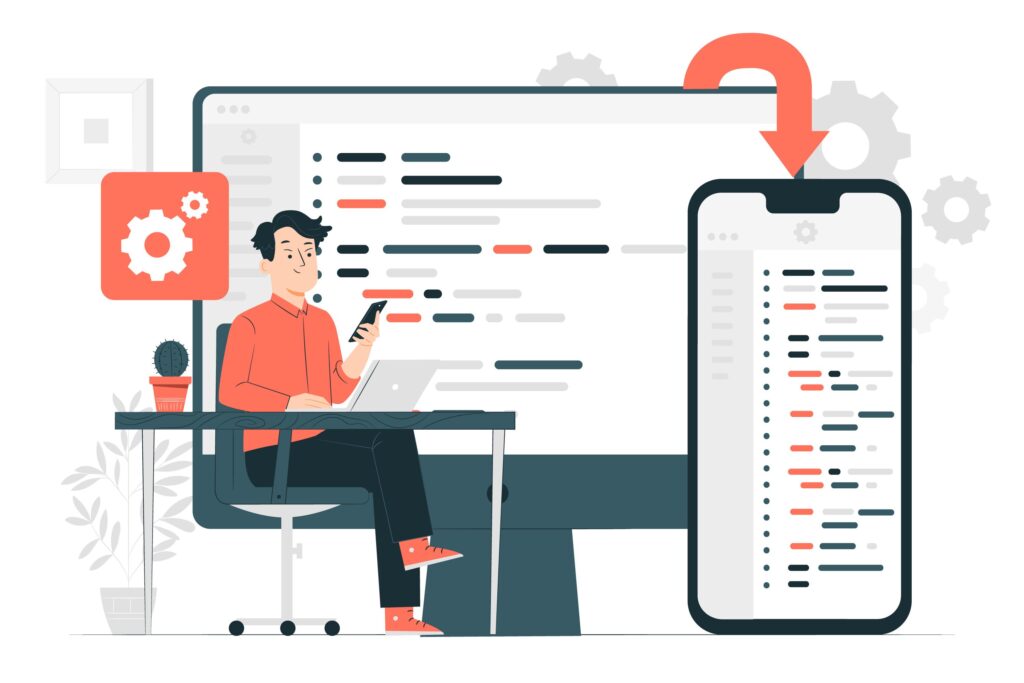Principles of Software Development Precisely Applied in the Automotive Industry

Automobiles are evolving into software-defined vehicles, and mobility is transforming into a digital network-based business. This puts a lot of demand on automotive software developers to develop more extensive digital platforms in ever-faster development cycles. Most car parts are made of hardware, and modern software creates the components.
The advances in technology and software have transformed many aspects of the customer experience by introducing intelligent information technology, driver aids, and car connectivity options.
What are the Key Principles of Software Development Used in the Automotive Industry?
There are a number of benefits of auto repair software for the technicians. For becoming competitive in the automotive sector, businesses need to be innovative and create items quickly. To assist you with developing modern software for the automotive industry, we’ve briefed the top five principles that can aid you in increasing satisfaction with your customers.
Lean Software Development
Lean emphasizes continuous improvement over abrupt, sudden, or irregular changes that could disrupt the overall process, leading to waste of time and material. Manufacturers use Layered Process Audits to verify that the process is followed correctly.
LPAs can improve quality and decrease costs. Value Stream Mapping, another powerful tool in lean, is Value Stream Mapping. It helps align processes with goals throughout the development process.
Lean Development is a software development principle for the Automotive Industry that solves this problem by combining agile and lean development methods in a shorter development cycle. This is less error-prone and allows greater flexibility to meet new demands and requirements.
It is more practical to build Automotive software that meets the needs of each project rather than creating a generic framework. These frameworks place an unnecessary burden on computing power, lead to obsolete code, are more likely to be misinterpreted, and result in more errors.
The model follows KISS and Clean Code rules and combines agile and lean principles. It consists mainly of Scrum and Kanban techniques with additional methods from extreme Programming (XP) to support the software development process.
The Lean principle is about continuous improvement and eliminating waste. This proven methodology eliminates non-value-added activities from processes to reduce operating costs and improve productivity.
These principles are basically about reducing waste and increasing production value. It is essential to know what constitutes waste. Once you have identified the wastes, a strategy must be created to minimize their effects and improve overall performance.
Agile Development Principles
An agile software development model is essential for the automotive industry. This model focuses on the division of development into subtasks. The software doesn’t need to be fully developed or tested.
Automakers need to recognize that they are in the middle of a transformation. They must change the way they build cars and rely more on software than mechanics. Vehicles run on code and less on horsepower.
Agile helps to identify, correct and validate whole products on time quickly. The agile methodology allows automotive companies to respond to market demand without losing time promptly.
Using an agile approach to software development, manufacturers can
- Reduce time to market
- Increase Cost efficiency
- Create products based on customer’s needs
- Increase product quality
- Manage complexity
Automakers must adopt agility in the digital and connected age. Both OEMs and Tier 1s should pay more attention to agile development. This scenario is because it creates cross-functional teams and receives customer feedback during process revisions.
Agile development consists of:
- Short development iterations
- Teams that are self-organized and cross-functional
- To improve efficiency, customers can provide feedback throughout the process
These processes are not only beneficial to the automotive industry but also to other industries.
Waterfall Principle
It is an ongoing (non-iterative) development process similar to flowing continuously downwards (like an eddy) through the stages- initiation, conception, analysis, design, testing, development, maintenance, and finally, the end.
According to this model, the development of waterfall programs- each step that includes conception, development analysis, design, and initiation – is carried out according to a set timetable. This development method has been utilized in many sectors, such as creating applications.
Industries with straight and straightforward processes can benefit from this sequential software development model. The waterfall model is based on disaggregating project tasks into linear, sequential phases. Each phase is defined with deadlines that are correlated with the preceding one.
Waterfall software development is a sequential model of software development. It is an ideal model for businesses with simple procedures. Startup companies with basic tasks typically use the waterfall model.
V-Model Principle
The V-Model (where V stands for verification and validation) breaks down this development procedure into two distinct parts. The left part of the V comprises an analysis of requirements functions design, requirement analysis, and software development. The right arm focuses on verification and validation processes followed by release.
The V-model extends the waterfall method. The V-Model focuses on testing and, in particular, the importance of early test planning. Every step of the model is in line closely with ASPICE standards and aids in defining a life cycle.
This model is based on linking each testing phase to the development phase. There is a testing process within this model that is related to it.
So, each stage begins after the last one is complete. Numerous companies employ it to manage various tasks because of its rigidity, which permits proactive monitoring of defects. The V-model has incredible flexibility that allows you to take on any product.
Iterative and incremental principle
The incremental or iterative software design is a technique of software development built around a gradual rise in the number of features added and a periodic upgrading and release schedule. Incremental software development and iteration start with planning.
It continues through cycles of iterative development that include continuous feedback from users and the gradual addition of new features, culminating in the deployment of the finalized software after the process.
In incremental development, the software components are built at different dates or times and integrated following their successful completion. In the process of iterative development, teams decide to revisit elements of the system to modify and improve the system. Feedback from users is used to alter the goals for the subsequent deliverables.
Key Takeaways
So, systems are reviewed by the teams working on development during iterative development to make changes and improvements based on user comments or any problems.
Changes are simple to integrate into this model during the development process. Furthermore, it is better manageable because bugs are detected in the early stages and dealt with appropriately.
Author bio:-
Mark Alfred is the Founder & CEO of 5iQ, cloud-based automotive software for the auto industry. We at 5iQ love sharing and discussing mechanical industry news.







